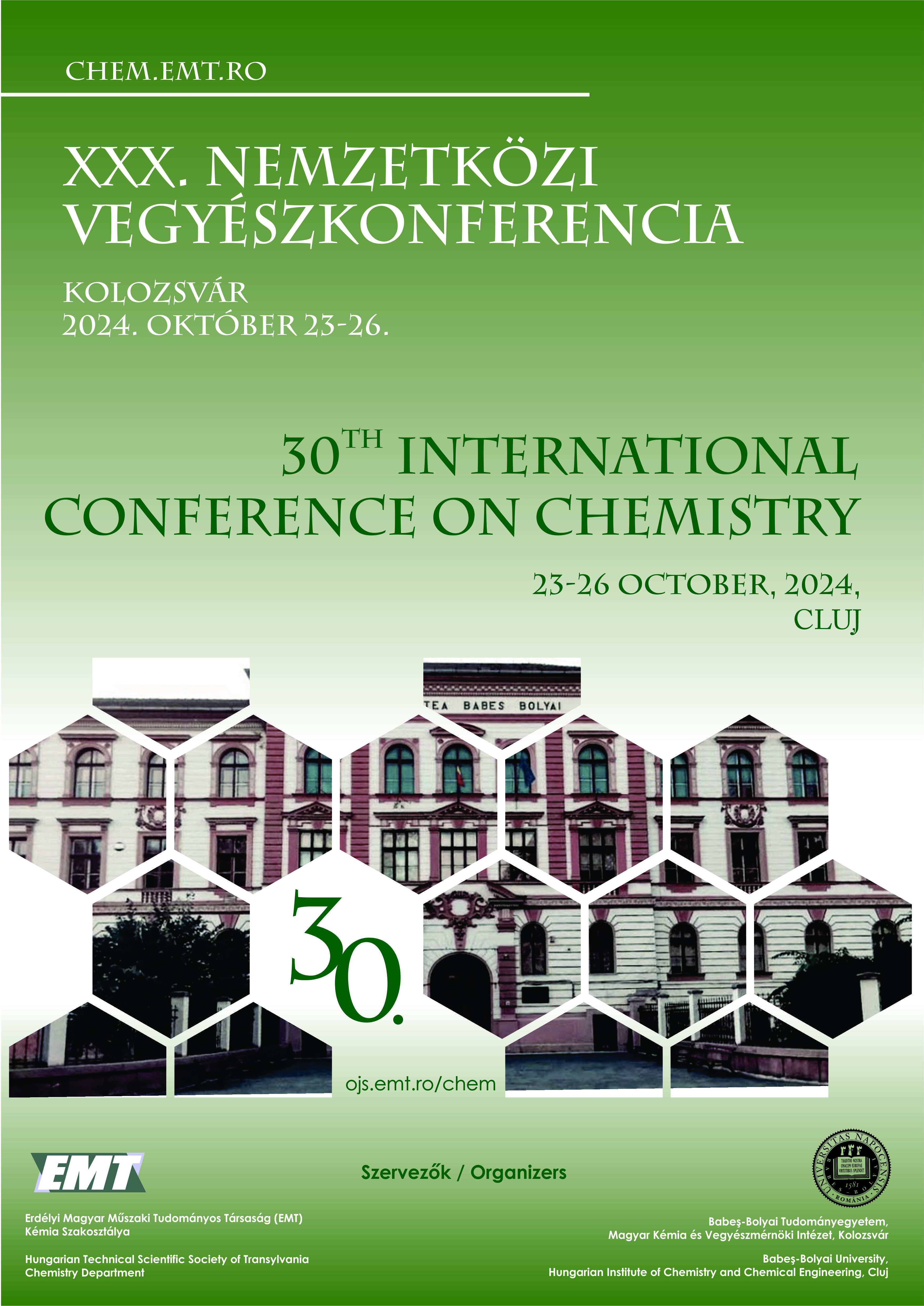Zárt ablációs mintakamrák fejlesztése halogéntartalmú peszticidek kimutatására
Development of closed ablation cells for the detection of halogen-containing pesticides
Keywords:
LIBS, peszticidek, zárt ablációs cellák, kemometria, módszerfejlesztésAbstract
In the present work, ablation cells were designed for laser-induced breakdown spectroscopy (LIBS) analysis. Small cylindrical cells which are closed with an optical window on the top were designed for the analysis of pesticides. The optimal parameters of the cells and their spectroscopically observable part were experimentally identified. Prototypes of the sample holders were 3D-printed from plastic, but the final design was manufactured from aluminum-based alloy. A cleaning protocol was also developed that allows the repeated use of the cells.
The applicability of two chemometric methods (random forest, RF; linear discrimination analysis, LDA) for the differentiation of pesticides (acetamiprid, chlorpyrifos, λ-cyhalothrin, tebuconazole, and tefluthrin) was investigated based on their LIBS spectra. The LDA analysis was found to be less accurate, while the RF method achieved 85% accuracy even in the validation step. The spectral lines and elements most often used by the RF method for classification were also identified. It was also examined at what level of dilution the chemometric method gives acceptable results for the LIBS spectra. Good results were obtained with a one-third dilution, but the accuracy significantly deteriorated past using a ratio of 1:5.
ÖSSZEFOGLALÓ
Munkám során zárt ablációs cellák tervezésével foglalkoztam lézer-indukált plazma spektroszkópiával (LIBS) történő vizsgálathoz. Kis méretű, felülről optikai ablakkal zárt, henger alakú cellákat terveztünk veszélyes minták elemzésére, amelyek optimális paramétereit és a spektrométer által látott részét kísérletekkel azonosítottam. A mintatartók prototípusait 3D nyomtatással, műanyagból készítettük, de a végleges mintatartót alumíniumötvözetből gyártattuk le. Tisztítási protokollt is kidolgoztam, ami lehetővé teszi a cellák többszörös alkalmazását
Két kemometriai módszer (véletlen erdő, RF; lineáris diszkriminancia analízis, LDA) alkalmazhatóságát vizsgáltam az acetamiprid, klórpirifosz, λ-cihalotrin, tebukonazol és teflutrin növényvédőszerek megkülönböztetésére LIBS spektrumaik alapján. Az LDA analízis pontatlanabbnak bizonyult, míg az RF módszer még a validációnál is 85% pontosságot ért el. Meghatároztam az RF módszer által leggyakrabban használt szelektor hullámhosszakat (elemeket) is. Azt is vizsgáltam, hogy mekkora hígításnál ad még elfogadható eredményt a LIBS spektrumokra a kemometriai osztályozás. Harmadára hígítva még jó eredményeket kaptunk, de 1:5 aránytól a pontosság jelentősen romlott.


